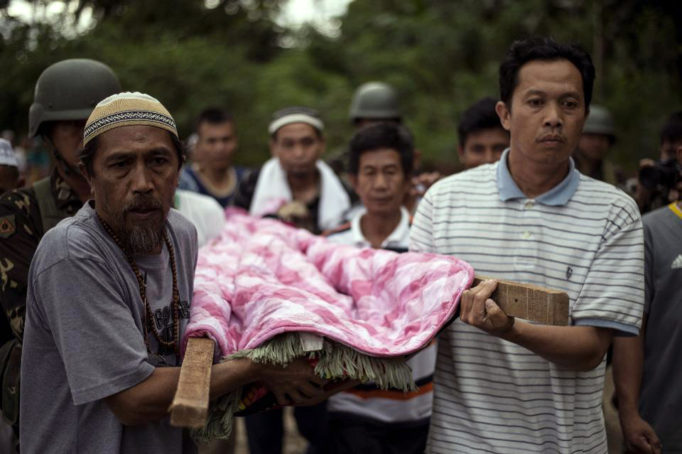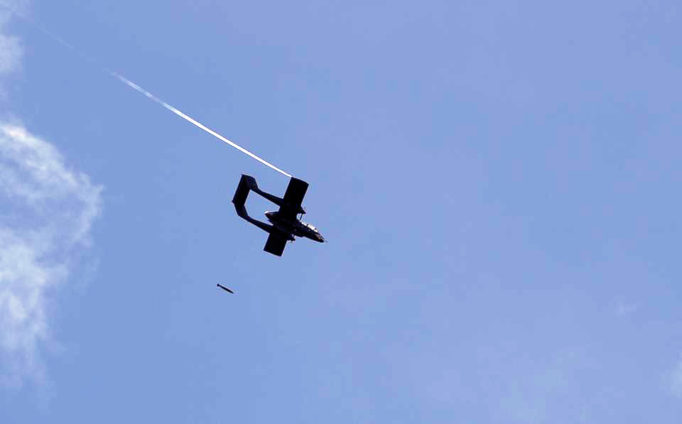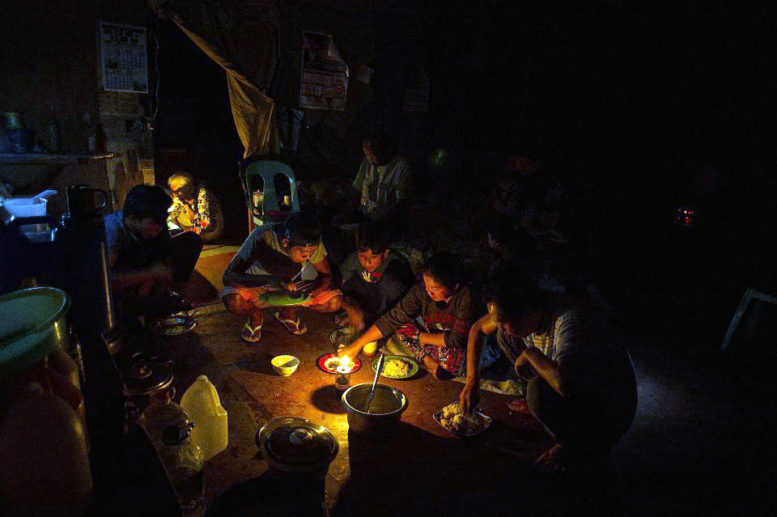Counterterrorism operations today often entail attempts to remove territorial “safe havens” for Islamic extremism. This is seen in fights against the Islamic State in Afghanistan, Iraq, Syria, and most recently, the Philippines. These fights are often government-led sieges of cities, like Raqqa, Mosul, and Marawi, where Islamic State has taken control, or at least has a strong presence.
But by using extensive military force to deny safe havens that tend to concentrate Islamic extremists, we may be spreading extremism diffusely across our vulnerable societies. The civilian deaths, property destruction and refugees from the sieges provide terrorists with propaganda tools to expand a network of recruits that strengthen and empower terrorism, making their organizations more dangerous than they were when concentrated in a particular locale. When allowed to concentrate and govern through peace agreements, extremists are shaped, and moderates empowered, by gradual government applications of institutional, economic, and legal influence.
The idea of counter-terrorism as violent conquest of territory is instantiated in a statement by Armed Forces of the Philippines (AFP) spokesman Brigadier General Restituto Padilla on June 9. He discusses Mindanao, which is currently under martial law to facilitate the retaking of Islamic State-controlled portions of the Muslim-majority city of Marawi. “The chief-of-staff [AFP head Gen. Eduardo Año] made an announcement hoping that by Monday [June 12, Independence Day] we can freely wave our flags in every corner of Marawi. We’re working feverishly to do that,” he said. On June 10, 13 more Philippine soldiers tragically lost their lives in the attempt.
But waving the flag in Marawi on Philippine Independence Day will not defeat terrorism in the Philippines. As a result of the government offensive in Marawi, and the terrorist reaction, over 200 have died, including civilians, soldiers, and enemy combatants. The fight has caused 239,000 internally displaced people (IDPs) in 18 days. Most of these people are Muslims, who could spread across the entire island of Mindanao, the Philippines second-biggest island. For reference, Mindanao is about the same size as South Korea, or the U.S. state of Kentucky.

Relatives of Abdillah Masid, carries his dead body to be buried in Barangay Saber in Marawi, on the southern Philippine island of Mindanao on June 9, 2017. Abdilla died after a stray bullet hit him in the neck during afternoon prayers inside the mosque. More than 200,000 people displaced after Islamist militants attacked a southern Philippine city are facing deadly health risks, relief groups said Friday after a fleeing mother told AFP her baby died because of a lack of medical care. Credit: NOEL CELIS/AFP/Getty Images
Some IDPs will head for Manila, and if refugees fleeing Syria and Iraq are any indication, a very small portion of them may sympathize with, or be, terrorists. Some IDPs are surely angry at the government for this fight. If they commit terrorist acts in Manila or elsewhere on Luzon Island, President Duterte could impose martial law over the entire country, which he seemed prone to do, even before the Marawi crisis unfolded.
Ostensibly to stop some Islamic terrorists, and the anti-liberal values they stand for, Duterte’s tough approach has set in motion a chain of events that could lead to the further spread of Islamic extremism in the Philippines.
Supposedly to defend liberal rights, his actions have led him to suspend those rights in Mindanao, and to threaten to end those rights in all of the Philippines. Duterte’s tough approach will not deter determined terrorists from coming to the Philippines. And it will likely create many such terrorists from previously unpoliticized Muslim locals whose increasing poverty and ruptured social networks will make them newly vulnerable to Islamic State recruitment.
By using military force on a large scale to capture a few terrorists, the government proves the impotence of its political influence in Marawi. Had the government more strenuously cultivated such influence, for example by congressional action on popular but lapsed peace agreements from 1996 and 2014, it likely would have achieved its objectives with a much lighter touch. That the government must use armored vehicles, aerial bombing, and U.S. surveillance flights to deal with the situation, shows that Islamist extremists in Mindanao had sufficient truck with the local Muslim community to remain hidden in Marawi. The government’s original objective, Islamic State Southeast Asia emir Isnilon Hapilon, is still at large.

An OV-10 Bronco aircraft drops a bomb against an Islamist militant hideout in Marawi, on southern Philippine island of Mindanao on 9-June-2017. Credit: NOEL CELIS/AFP/Getty Images
The Maute Group, which is now part of Islamic State, offered Duterte a cease-fire last year. He rejected it in a way that showed disregard for civilian life in Marawi, saying, “They said that they will go down upon Marawi to burn the place. And I said, ‘Go ahead, do it.’” Duterte’s orders in the last three weeks have led to the destruction of much of the city. “It was not the spread of ISIS in Iraq and Syria that fueled ISIS cells in the Philippines, but the collapse of the peace process,” Zachary M. Abuza of the National War College told the New York Times.
Given the colonialism of Spanish and American occupation, increasing population pressure since the 20th century, Duterte’s threats of cannibalism against terrorists, his jokes about rape in the context of the siege in the past few weeks, and draconian military measures foisted on the population of Marawi today, it would not be surprising if a small percentage of Muslims and indigenous people on Mindanao are highly critical of the government in Manila. The island used to have a majority of Muslims, but that majority has eroded to about 20-40% after repeated periods of conflict and government-sponsored immigration. The military methods required to meet the latest Manila-imposed deadline to retake Marawi could be seen, by some discontents on Mindanao, as the violent part of a new form of colonialism emanating from Manila.

A bomb explodes after being dropped on an Islamist militants’ hideout in Marawi, on the southern Philippine island of Mindanao on 9-June-2017. Credit: NOEL CELIS/AFP/Getty Images
That discontent feeds extremist ideas that can’t be killed with bullets. The ideas that motivate the terrorists in Marawi likely live on in at least some of the 239,000 IDPs that the government offensive against terrorists has created. They live on among a small percentage of the millions of Muslims worldwide who are watching the battle unfold, and who may wonder why the terrorist leader Hapilon could not have been dealt with as a police matter so as not to uproot the entire Muslim community of Marawi. Some of the new IDPs in Mindanao, and those watching their plight abroad, may seek the implements of terror that they wrongly think will further their cause, not only in Mindanao, but Manila, London, or New York City.
The idea of Islamic extremism, or a caliphate, or the attraction to the misguided young of using violence to promote these ideas, will only be strengthened by military sieges of cities like Marawi, Raqqa, and Mosul. We can educate people to no longer believe in the paths of extremism, but to do so we must more often fight that extremism with educational and police, rather than military methods. Military methods will be needed on occasion, but should be used sparingly and only after careful deliberation regarding the effects on civilians, and the propaganda value that such methods will supply to the terrorists. It is not clear that such deliberation occurred prior to the siege of Marawi.
City sieges are themselves extremist forms of violence. The real safe haven for terrorism is not the unbesieged city, but the besieged one. It is a safe haven of the terrorist mind that exceeds the physical limits of the besieging armies. It is a safe haven in the ideas promulgated by terrorism, and amplified by government forms of extremism. Only by gaining entrance to the extremist mind, through education, rational debate, compromise, influence, and where necessary, police methods and the courts, will terrorism and other forms of violent extremism be suppressed at the source.
This article is reprinted with permission from FORBES.com: https://www.forbes.com/sites/anderscorr/2017/06/11/terrorist-safe-havens-are-in-the-mind-and-cannot-be-beaten-militarily/#5e47f8d3dcb9.
Anders Corr has worked in military intelligence for five years, including topics on nuclear weapons, terrorism, cyber-security, border secur ity, and counter-insurgency. He covered and visited Africa, Asia, Europe, Latin America, and the Middle East; and worked in Afghanistan for one and a half years. He holds a Ph.D. in Government from Harvard University, and a B.A. and M.A. in international relations from Yale University (Summa cum laude). His company, Corr Analytics, provides political risk analysis to commercial, non-profit, and media clients, and publishes the Journal of Political Risk. He is editing a series on the South China Sea conflict. The author is a Forbes contributor.
ity, and counter-insurgency. He covered and visited Africa, Asia, Europe, Latin America, and the Middle East; and worked in Afghanistan for one and a half years. He holds a Ph.D. in Government from Harvard University, and a B.A. and M.A. in international relations from Yale University (Summa cum laude). His company, Corr Analytics, provides political risk analysis to commercial, non-profit, and media clients, and publishes the Journal of Political Risk. He is editing a series on the South China Sea conflict. The author is a Forbes contributor.
